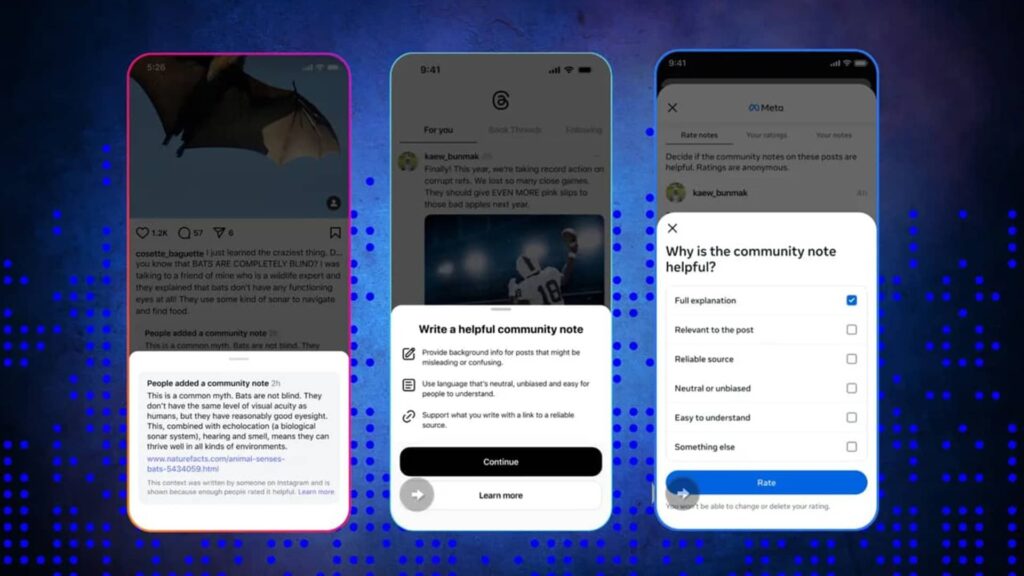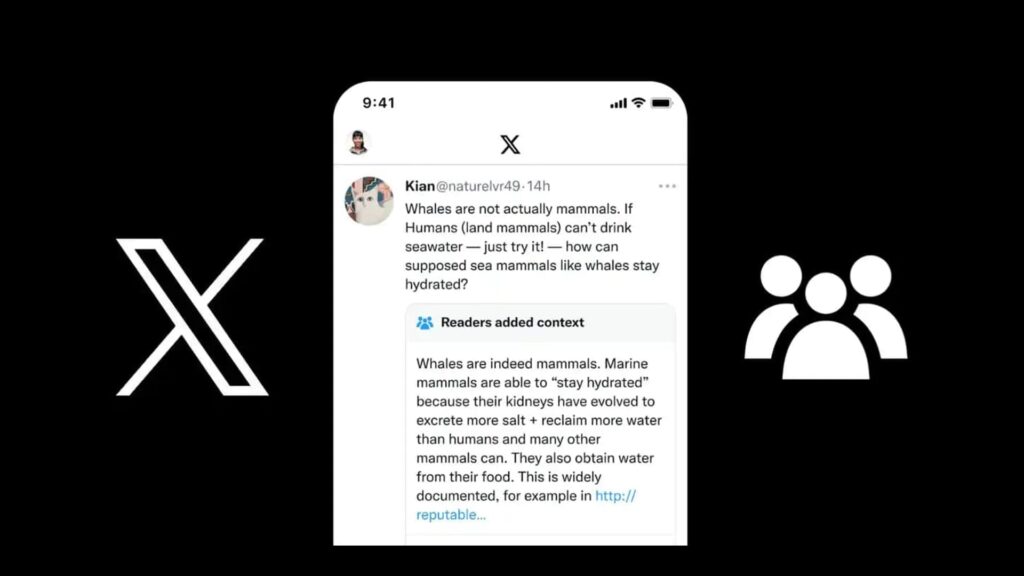Meta has announced the launch of Community Notes; a crowd-sourced content monitoring mechanism envisioned to lessen false information. The feature will use the open-source algorithm from Elon Musk’s social media site, X (previously Twitter), to replace conventional third-party fact-checkers. 200,000 contributors have already registered for testing, which is scheduled to start on March 18.
The parent company of Facebook, Instagram X for Community Notes. Although the crowdsourced approach offers a more transparent and scalable alternative to traditional fact inspection, there are still worries about possible bias and manipulation. The initiative’s success will depend on how well Meta handles these issues and whether users believe the system to be a reliable source of fact-scrutiny.
Why is Meta making the shift?

- Meta has positioned Community Notes as a less biased option to third-party fact-checking.
- The company wants to moderate misinformation more effectively and on a larger scale.
- The transition to a crowdsourced model was prompted by the decline in public confidence in fact-checking organizations.
- The action is consistent with Meta CEO Mark Zuckerberg’s policy reforms, which have also included loosening restrictions on content filtering.
- “We expect Community Notes to be less biased than the third-party fact-checking program it replaces and to operate at a greater scale when it is fully up and running.”
How does “Community Notes” work?

- Potentially false content is flagged and annotated by contributors.
- Community Notes will be published only when users with different points of view agree that the notes are accurate
- Although it will be modified over time, the system makes use of X’s open-source algorithm.
- Flagged content will not be penalized; the intention is to give context, not to delete posts.
- Community Notes won’t limit the visibility of content, but they also can’t be challenged.
- On Facebook, Instagram, and Threads, users can identify inaccurate or deceptive content by writing and rating notes.
- Notes will be initially offered in English, Spanish, Chinese, Vietnamese, French, and Portuguese, with a character limit of 500.
- Anonymous notes will only be published if contributors with varying opinions concur that they offer useful background.
- Contributors must include a supporting link in their remarks.
- Following the launch of Community Notes, third-party fact-check labels will no longer be visible in the United States.
- With more than 3 billion users, Meta presently collaborates with about 100 credited fact-checking groups in more than 60 languages.
“Notes will provide extra context, but they won’t impact who can see the content or how widely it can be shared.”
Criticisms and Concerns

Possibility of manipulation: Critics caution that sizable organizations with particular goals may take advantage of the system.
Absence of official fact-checking: According to some experts, expert-reviewed fact-checking cannot be completely replaced by crowdsourced notes.
Control over transparency: Meta has not yet made a commitment to making its own algorithm open-source, in contrast to X.
“A Community Notes program is not a replacement for official fact-checking, but it can assist in providing context for online content.” George Washington University’s Neil Johnson
Plans for the Future and Expansion

- The United States will host the first rollout.
- After beta testing, Meta intends to go worldwide.
- The algorithm may be changed by the company in response to testing results and feedback.
- Contributors need to be at least 18 years old and have a valid phone number, among other conditions.
Possible Effects on the Social Media Environment
The way that major platforms tackle disinformation may change as a result of Meta’s plan to incorporate a crowdsourced content regulation mechanism. If it works, other digital firms might follow suit, prioritizing community-driven responsibility above centralized moderation. Critics counter that if the system is misused, a lack of monitoring might allow false narratives to continue.
Regulators, scholars, and social media users will all be keenly monitoring Meta’s implementation of this function as it strikes a balance between responsible moderation and free expression, which continues to be a major difficulty.













